|
Defects
|
Probable causes for the defect
|
Design for Maintainability (DfM) Guidelines
|
Corroded water tank body
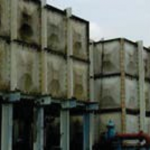 Corroded tank body  Corroded and damaged water tank 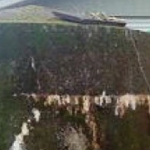 Corroded water |
- Poor application / peeling and delamination of coat (steel tank), water seepage (concrete tank)
- Parts (eg pipes/ strainer) not corrosion resistant or changed with time.
|
Design
- The body of the water tank should be made of watertight and corrosion-resistant material, such as reinforced or pre-stressed concrete, steel, and glass fibre reinforced plastics (SS 245:2014, BS EN 13121-3:2016).
- Specify surface treatments, waterproof coating, or lining coating to resist water seepage and weathering.
- Ensure that such finishes do not affect the stored water’s quality of hygiene (BS 8558:2015, SS CP 48:2005).
Construction
- Structure of water tank should be constructed with adequate strength and be free from any deformation. Refer to BS EN 10088-2:2014 for standards for a Stainless Steel Sectional Water Storage Tank (Minimum Grade 316).
- The water storage tank’s installation must be certified by a Professional Engineer to ensure that it is structurally sound with regard to hydrostatic pressures, deflection and leakage.
Maintenance
- Ensure that the parts (e.g. pipes/strainer) are corrosion-resistant and can be replaced over time.
- Perform timely re-application of coatings to avoid peeling and delamination of coat (for steel tanks), and water seepage (for concrete tanks).
- Use disinfectant to clean water tanks (BS EN 805:2000).
- Once disinfectant has been sprayed on inner surfaces and pipes for the designated period, it should be thoroughly cleaned/removed.
|
Leakage and overflow of water from water tank
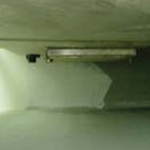 Overflow of water as seen from underneath a tank 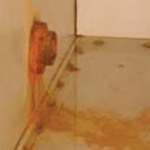 Corrosion of bolts and subsequent leaking of GRP tank |
- Cracks of concrete tank due to corrosion or poor structural design.
- Severe rusting of metal tanks.
- Poor detailing / workmanship at pipe penetration cause leakage.
- Poor provision to cater overflow – poor drainage of receiving basin of underground storage.
- Damaged float valve or liquid level indicator unable to control overflow.
|
Design
- Decision on the size(s) of the tanks should be made based on water demand, supply, probability of pump failure, time needed for repairs, ratio of peak hours to average flow rate, provision of alternative supply or storage, etc. (SS CP 48:2005, BS 8554:2015).
- Ensure the proper design detailing of pipe penetrations at the tank to avoid leakage.
- Avoid cracks in concrete tanks; ensure water- tightness, through proper structural design.
- Specify appropriate waterstops and sealants where pipes penetrate the structure.
- Maintain a minimum air gap above maximum water level (SS 245:2014, BS EN 13121-3:2016).
Construction
- Ensure that the tank is capable of handling various loads (as applicable) without showing cracks, stress or deformation (SS 245:2014, BS EN 13121-3:2016).
- Construct the tank body as per specifications (additive, coating, and lining), and render as a monolithic and watertight container. Maintain the exact size and positions of installed devices (SS 245:2014, BS EN 13121-3:2016).
- Commission tank by testing for water- tightness; check for any leakage, seepage, and water loss.
- Ensure that all components are functioning well.
Maintenance
- Conduct monthly inspections to check the operation of float valve or any other effective device for controlling the inflow of water. All valves should be periodically operated to ensure that the working parts are moving freely (BS 8558:2015, SS CP 48:2005).
- Inspect condition of overflow warning alarm for the water tank. Inspect the condition of warning alarm which indicates when water levels fall below 50mm from the invert level of the pipes.
- Inspect drainage lines and basin.
- Conduct routine checks for rusting of metal tanks and apply anti- corrosive paint/coatings where necessary.
- Perform routine checks on float valve and liquid level indicator for damages to avoid potential overflow.
|
Difficulty in cleaning due to unauthorised or poor accessibility
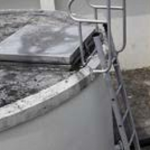 Lack of safety cover and security lock in water tank  Good practice; make provisions for access to water tank(s) for maintenance and/ or inspection |
- Inadequate space around the tank or access in not proper.
- Wash out pipes / sumps not provided or wrongly constructed.
- Tanks are not compartmentalized – hence cleaning results shutting of the whole supply and causes inconvenience.
|
Design
- Provide a permanent climbing ladder for easy inspection and cleaning of interior.
- Provide a minimum of 600mm space, on all sides of the tank.
- Install minimum possible number of openings to each compartment; each opening should be fitted with a cover/trapdoor.
- Provide corrosion- resistant, mosquito- proof netting for overflow pipe/vent.
- Design a series of tanks instead of one large tank, to meet demand for isolation during maintenance, for ease of access.
Construction
- Ensure there is adequate access space to and around the tank.
- Ensure that the tanks are not compartmentalised, so as to avoid the shutting off of the whole supply during cleaning (inconveniencing building users).
- For the purpose of safety and security, provide a lock to water tank, so that only authorised personnel can access it.
- Ensure that the access is easy and safe, and for authorised persons only.
Maintenance
- Conduct general housekeeping within and around the tank room to remove any obstructions to maintenance access.
- Perform monthly cleaning of wash-out pipes to ensure proper flushing out of the water.
- Remove sand and dirt deposits in cisterns and tanks. Remove rust stains and repaint affected parts as required. Prevent dirt, dust, insects, birds, etc. from entering the tank.
- Conduct thorough cleaning and disinfection of tank interiors semi- annually.
|
References
[1]
Normative References/Standards Referred to for Air Handling Unit and Fan Coil Unit






